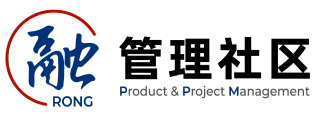扫码阅读
手机扫码阅读
大规模敏捷三十六计(英文版)
 749 2023-07-31
749 2023-07-31
我们非常重视原创文章,为尊重知识产权并避免潜在的版权问题,我们在此提供文章的摘要供您初步了解。如果您想要查阅更为详尽的内容,访问作者的公众号页面获取完整文章。
精益敏捷

扫码关注公众号
摘要:《DevOp三十六计》第二章 大规模敏捷三十六计
大规模敏捷转型的变革管理
- 成立敏捷转型委员会以系统化推进敏捷变革。
- 围绕业务线或产品线形成包含多个小型敏捷团队的大规模敏捷团队。
- 在敏捷转型开始前培训业务线或产品线负责人及关键利益相关者,以统一转型方法。
- 成立敏捷教练社区,包括组织级内部敏捷教练和产品线敏捷守护者。
- 产品线敏捷守护者需定期向高层反馈进展并寻求支持。
- 采用敏捷思维引入新实践,通过教练待办事项进行迭代和增量式推进。
- 可视化转型进展,并迭代跟踪、测量及反馈。
组织结构设计
- 每个小型敏捷团队(少于10人)需要一名专属产品负责人(PO)和一名ScrumMaster。
- 小型团队以面对面协作、自组织的形式运作,成员包括程序员、测试人员等。
- 大规模敏捷团队需要一名专属产品经理和一名首席ScrumMaster(Release Train Engineer)。
- 为产品线设立系统团队,负责构建和测试环境、DevOps工具和平台的管理。
敏捷需求管理
- 产品经理定义产品愿景并确保团队目标与业务目标一致。
- 业务领导系统化管理产品组合,产品经理根据战略和优先级调整路线图。
- 产品经理领导产品负责人团队,以MVP思维滚动确认需求并保持待办事项清单准备就绪。
- 需求结构分为史诗(Epic)、特性(Feature)、故事(Story)。
- 使用产品级看板管理需求状态(特性)。
敏捷架构设计
- 大规模敏捷团队需要架构师负责软件系统架构,并拥有决策权。
- 架构师与关键团队成员共同决定如何应对架构风险,引导迭代成果。
大规模敏捷运营
- 所有小型敏捷团队统一两周迭代节奏,并保持一致的迭代开始和结束日期。
- 所有团队成员参与敏捷转型启动会议并接受产品线及团队级培训。
- 产品线成员在每个周期开始时参加敏捷发布计划会议,业务负责人介绍背景并分配业务价值。
- 按固定节奏举行发布计划会议,每次计划包括2-4次迭代。
- 通过产品计划板可视化发布计划、依赖关系及里程碑。
- 每周至少一次同步产品经理和产品负责人之间的需求。
- 每次迭代后举行系统演示会议,业务代表与团队成员审查集成成果。
想要了解更多内容?
精益敏捷

扫码关注公众号
一文看懂持续部署按需发布!DevOps部署和发布方法大全【万字长文】
上一篇
没有了
下一篇
精益敏捷的其他文章
项目经理是否可以成为优秀的Scrum Master?
来自敏捷大师Mike Cohn创建的敏捷导师社区网站的文章,带来业界一线实践者的观点。
SAFe® 4.5白皮书中文版(六)——基本SAFe(Essential SAFe)
基本SAFe配置是框架的核心,也是实施SAFe最简单的起点。这是所有其他SAFe配置的基本组成部分,并描述了实现框架大部分收益所需的最关键要素
SAFe® 4.5白皮书中文版(十一)——实施SAFe
任何成功的变革都需要将不明确的目标转化为具体的行为。要进行转变,你需要编写关键行动脚本。
一文看懂持续部署按需发布!DevOps部署和发布方法大全【万字长文】
部署与发布是两个不同的概念,DevOps下需要的是持续部署,按需发布。
SAFe® 4.5白皮书中文版(八)——大型解决方案SAFe(Large Solution SAFe)
大型解决方案SAFe配置用于开发最大和最复杂的解决方案,通常需要多个敏捷发布火车和供应商,但不需要投资组合层的考虑。这对于航空航天和国防、汽车和政府等行业来说很常见,因为大型解决方案是主要关注点,而非投资组合治理。
加入社区微信群
与行业大咖零距离交流学习


PMO实践白皮书
白皮书上线
白皮书上线








